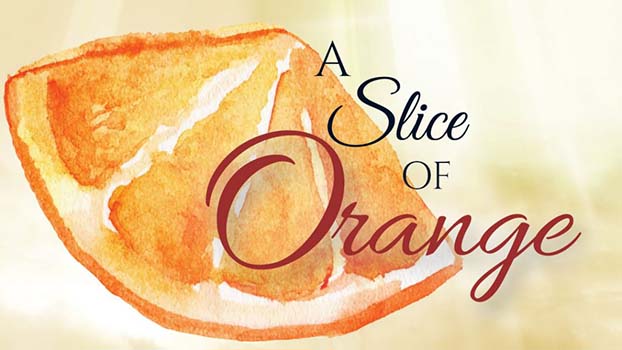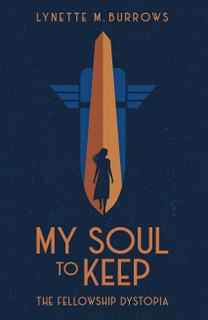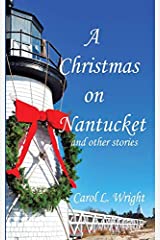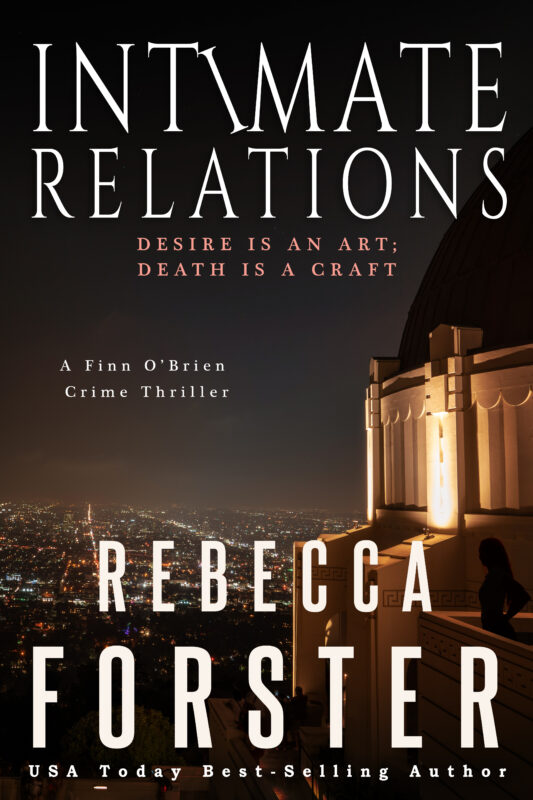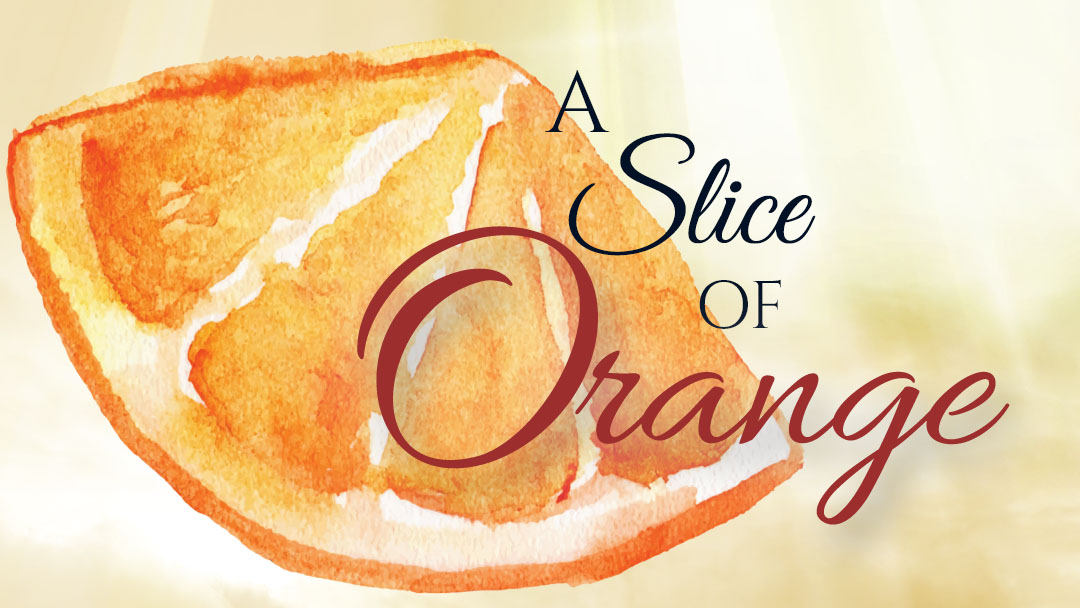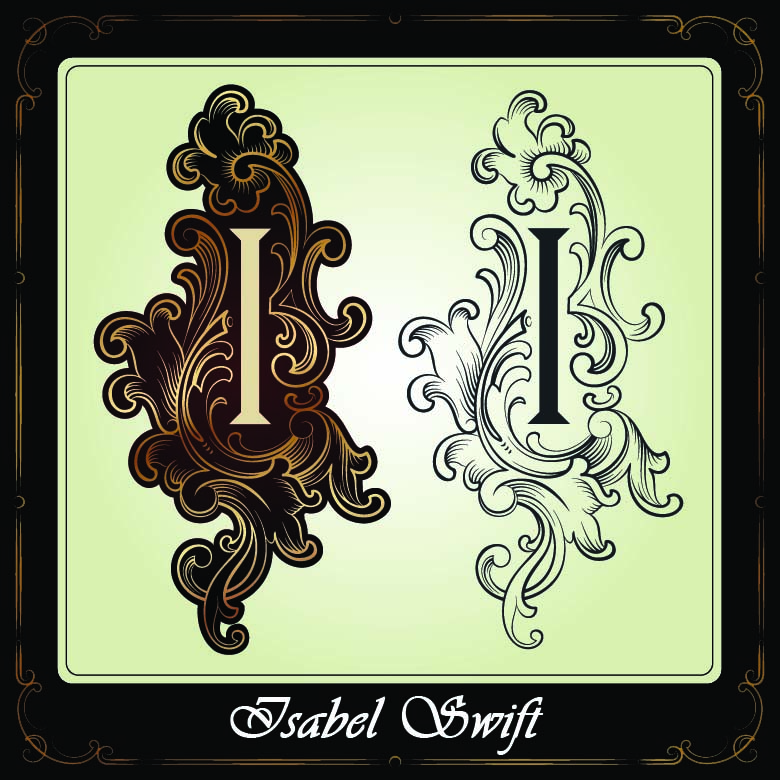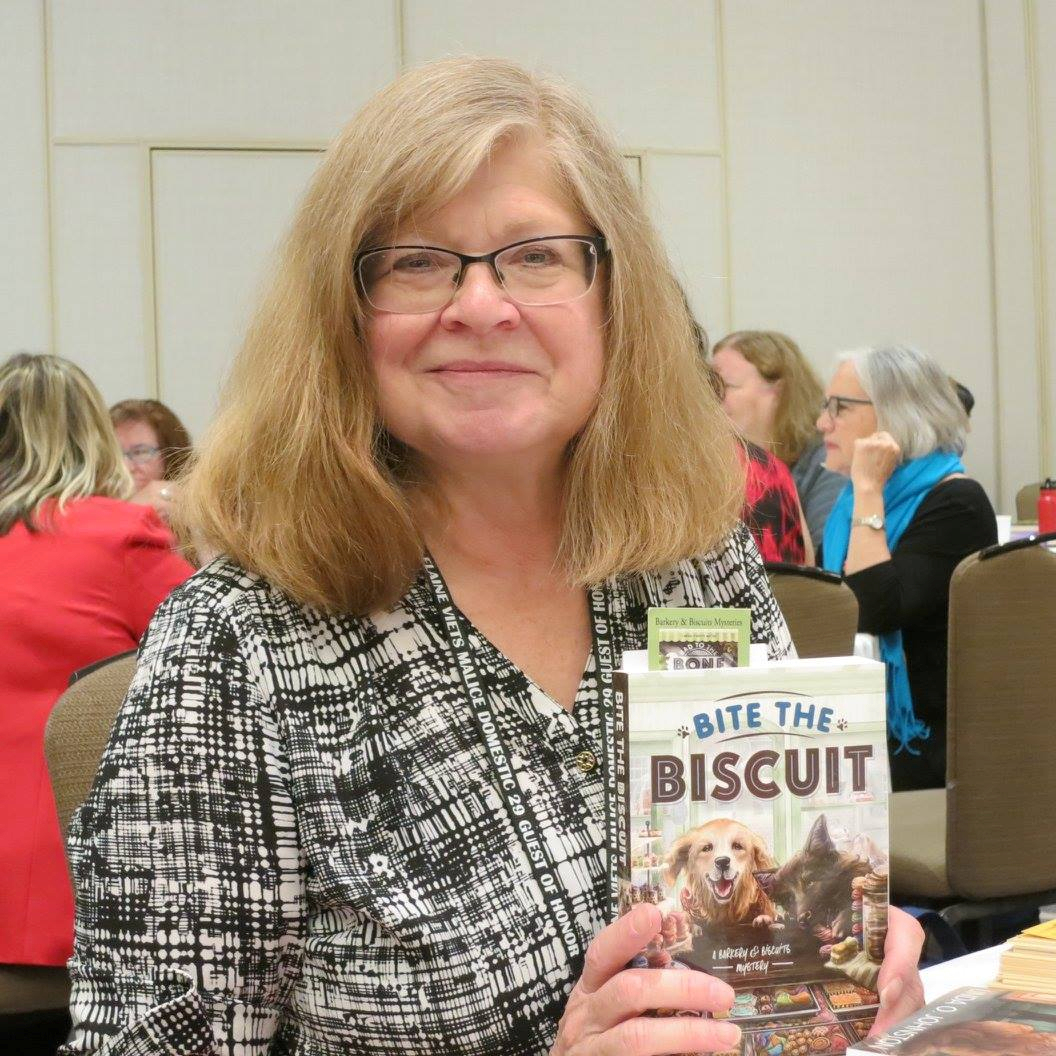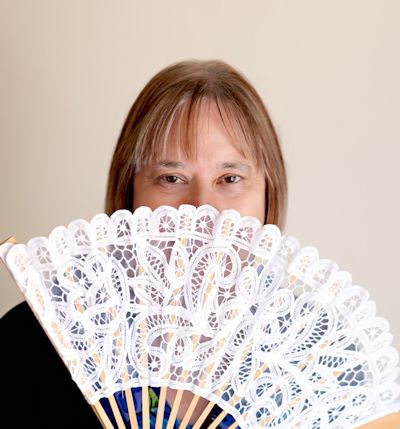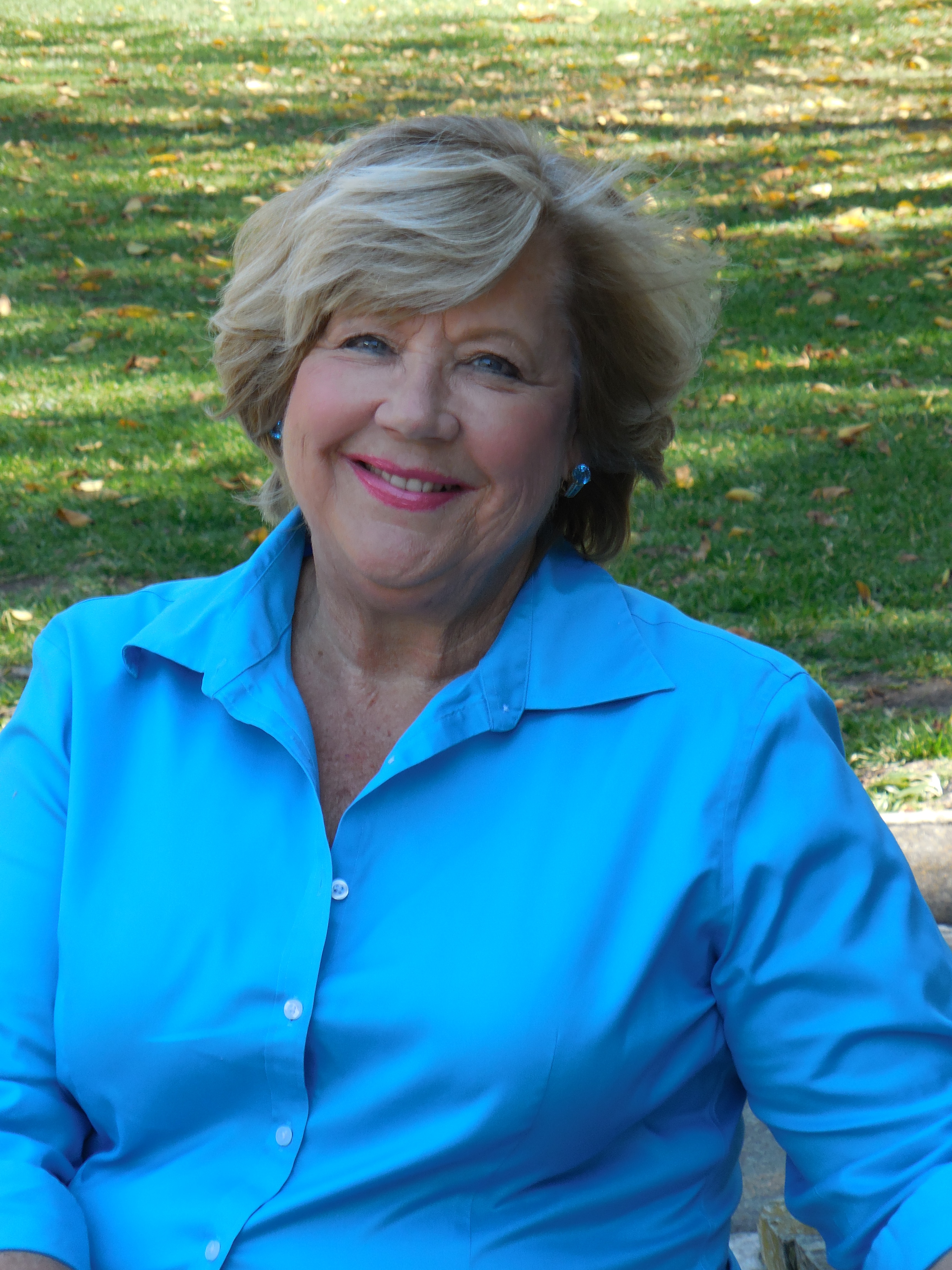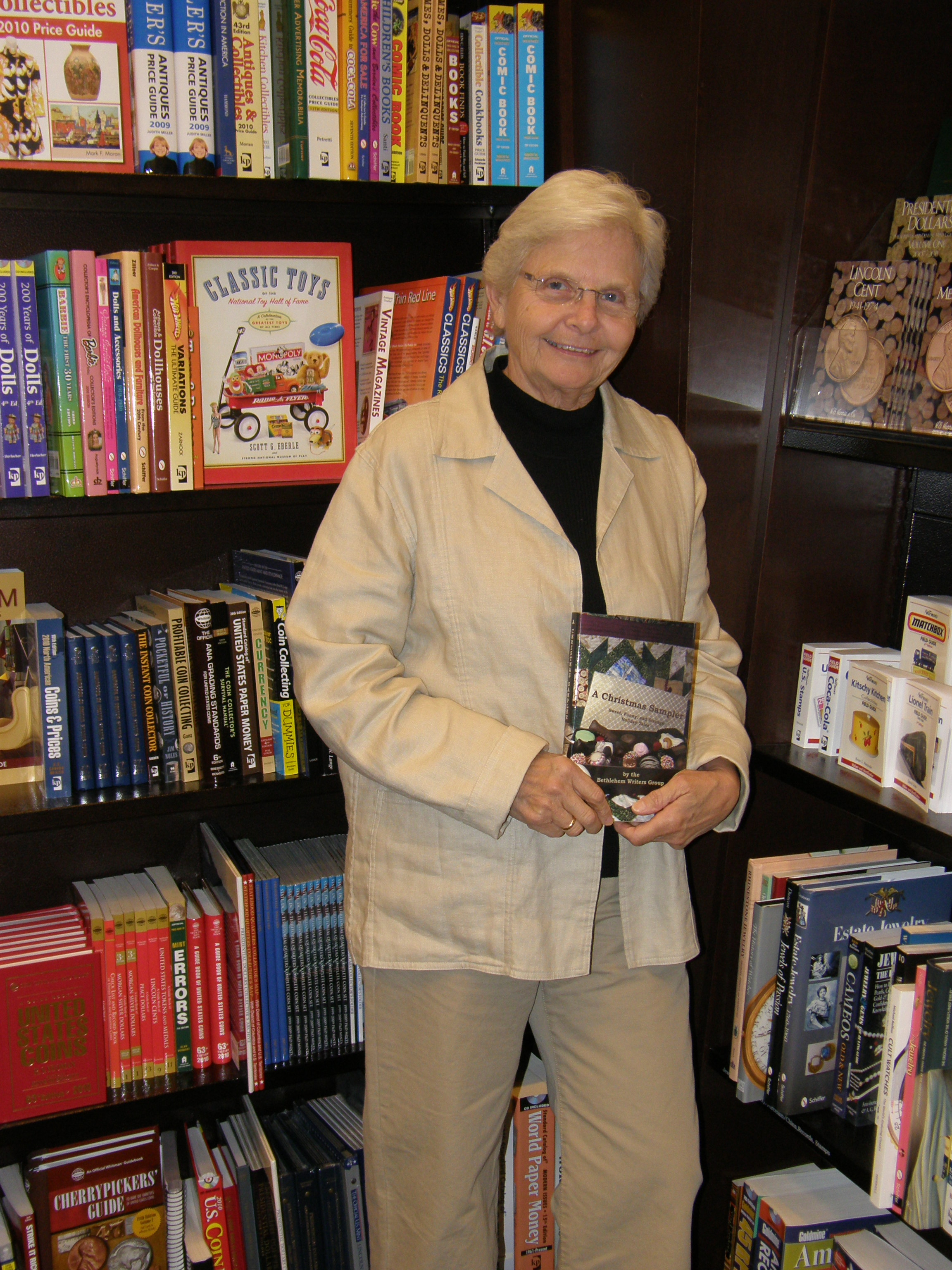Tom Swifties and the Art of the Dialogue Tag
June 28, 2020 by Alina K. Field in category Quarter Days by Alina K. Field, Writing tagged as Dialogue Tags, Puns, Tom Swifties
One of the rules of contemporary fiction is that all words ending in -ly ought to be found in a Word search and banished.
Another rule is to avoid using substitutes for said: no murmurs, grunts, hisses, etc.
But it wasn’t always this way!
In what I always think of as the Golden Age of pulp fiction, an author might get away with a Tom Swifty. Though I have a degree in English and I’ve been to countless writing conferences, I only just learned this term from one of Anne R. Allen’s blog posts.
So what is a Tom Swifty?
In case you don’t have time to link to the Merriam-Webster article here’s the definition:
“A Tom Swifty is a play on words taking the form of a quotation ascribed to Tom and followed by an adverb.”
Or, as Wikipedia says, it’s
“a phrase in which a quoted sentence is linked by a pun to the manner in which it is attributed.”
Tom Swift

A “punny” guy
First published in 1910, the Tom Swift books spanned multiple series, and were written by Edward Stratemeyer and other authors under the pseudonym Victor Appleton. Stratemeyer was also the creator of the Hardy Boys, Bobbsey Twins, and Nancy Drew books.
I haven’t read Tom Swift, but I grew up with Nancy Drew. Wouldn’t it be wonderful to have as many successful book series as Edward Stratemeyer?
Another famous author of commercial fiction used this sort of “punny” literary device: Charles Dickens. Ah, the good old days when authors could have more fun.
Examples, please…
A whole book has been written on the subject, Tom Swifties, by Paul Pease and Bill McDonough. The few copies available start at $40 on Amazon!
But, the Wikipedia article on the subject has a long list of howlers like these:
- “I love hot dogs,” said Tom with relish.
- “I forgot what I needed at the store,” Tom said listlessly.
- “I have no flowers,” Tom said lackadaisically.
I could see these working in a humorous cozy mystery!
Do you have a favorite Tom Swifty? Share in the comments below!
7 0 Read moreWomen in Banking #WomensHistoryMonth
March 28, 2020 by Alina K. Field in category Quarter Days by Alina K. FieldWelcome to my quarterly blog at A Slice of Orange!
We’re living in interesting times, and I was tempted to write a post about historical plagues and pandemics… But, if you’re like me, you’re heartily sick of hearing about them.
So, since March is Women’s History Month in the U.S., I’m sharing a gem of a book I found about women bankers.

Women Who Made Money: Women Partners in British Private Banks 1752-1906 , by Margaret Dawes and Nesta Selwyn
Regency romance enthusiasts will know the story of Sarah Sophia Fane Child Villiers, Countess of Jersey and one of the patronesses of Almack’s. Sarah inherited a partnership in Child’s Bank, and became an active participant in the bank’s management until her death in 1867. (Her mother, also named Sarah, had been cut out of the will after her scandalous elopement to Gretna Green with the Earl of Westmoreland!)

But, you ask, didn’t the law say that all of a woman’s property became her husband’s upon marriage?
The authors explain how some women, either through the wisdom of enlightened parents or their own power as widows managed this:
The law has always offered loop-holes. Provision could be made in her marriage settlement for a woman to retain the use of her own property . . . It was also possible for a woman’s property to be placed in the hands of trustees before her marriage, so that her husband could have no use of it without her consent.

Marriage settlements were extremely important financial and legal agreements negotiated by wealthy parties prior to marriage. Today, we call those “pre-nups”.
Middle-class Country Bankers
The book includes the stories of Lady Jersey and Harriet Mellon Coutts, an actress who inherited her husband’s interest in Coutts Bank and went on to marry the Duke of St. Albans (and still retain ownership of her wealth). But most of the seventy-six women bankers were solidly middle-class.

Many women established country banks with husbands or sons. Some inherited banks. Many also engaged alone or with husbands in other types of commerce, such as shipping, mining, or manufacturing.
And you won’t find most of these women mentioned in Wikipedia!
If you’re interested in a chronicle of women in business in the eighteenth and nineteenth century, you might enjoy this book.
Wishing you much good health until we meet again in June!
10 0 Read moreHappy Holidays!
December 28, 2019 by Alina K. Field in category Quarter Days by Alina K. Field tagged as #NewRelease, Jewish FictionI’m back with my Quarter Days’ post!
If you celebrated Christmas a few days ago, I hope you had a merry one with family and friends. And if you’re in the midst of celebrating the eight days of Hanukkah, well, my wish for you is the same!

Which reminds me of a story my sister once shared. She was lamenting about having to choose and buy Christmas gifts for her three kids. The doctor she worked with said, “Ha! Try having to buy one gift for each night of Hanukkah for each of my three kids.” (Maybe it’s not obvious, but this was a mom-doctor, not a dad-doctor.)
Something different
Today, instead of talking about historical traditions related to the Yuletide, I wanted to share Of The Book, a new anthology–not fuzzy-feeling-inducing holiday romances, but scary, raise-the-hair-on-your-neck stories.
In a word, horror! And more specifically stories rooted in Jewish folklore.
I’m especially excited that this anthology includes a chilling story by my niece, Hadley Scherz-Schindler. (Proud aunt here!) More on her contribution, “The Baby Naming” below.
A Re-emerging Genre
Around the time I was planning this post, I received an email about a new marketing report from Alex Newton founder and proprietor of the book analytics firm, K-Lytics.
Alex has just published his first ever Horror Fiction report. He often has his finger on the pulse of the market, and he’s seen a surge of interest in straight up horror fiction. I wish that the late Joyce Ward, who once told me she loved writing Horror, was around to take advantage of this trend.
In any case, if you’re a fan of the genre, here’s a bit about the anthology:

Of The Book
For nearly 6000 years the Jewish people have been gathering stories. Stories of sheydim and golem. Stories of heroes and monsters.
For as long as the People of the Book have been, they have been storytellers. Gathered here are tales of contemporary Jewish folklore. Frightening, supernatural, uplifting and upsetting. These Jewish writers took old tropes, legends and concepts of an ancient faith and spun it into something incredible and new. From across the diaspora, they gather in Of The Book.
The blurb for “The Baby Naming”, by Hadley Scherz-Schindler
A distant Lithuanian cousin, a scholar of the Kabbalah, crashes the naming ceremony for little baby Rachel, sharing a warning about a family curse, and the sacrificial requirement to defeat the demon. But will the exhausted parents heed the warning? And what will happen if they don’t?
Short and scary, I loved this story! I’m dipping into the other eleven hair-raising tales as I get up the nerve.
Buy Link: https://www.amazon.com/Book-Corners-World-1-ebook/dp/B08286LC3M
About Hadley Scherz-Schindler
Hadley Scherz-Schindler grew up in St. Louis, Missouri, a city full of music, barbeque and ghosts. She converted to Judaism when she married into a family of rabbis and has four children who drift between college, grad school and home. Hadley still lives in St. Louis with her husband, Josh, and their collie, Frodo.

Wishing you many blessings for 2020! I’ll be back for a new Quarter Days post in March!
3 0 Read moreQuarter Days: Queen Victoria, Mangoes, and Book vs. Film
June 28, 2019 by Alina K. Field in category Quarter Days by Alina K. FieldGreetings and happy summer!
 A few ideas popped up for this post, but since I write historical fiction, I decided to honor Midsummer by talking about Queen Victoria, with a passing mention of mangoes.
A few ideas popped up for this post, but since I write historical fiction, I decided to honor Midsummer by talking about Queen Victoria, with a passing mention of mangoes.
June 28, 2019, is the 181st anniversary of the coronation of the nineteen-year-old Queen Victoria. Her stable and fecund marriage and her famous stodginess has branded the looooong years of her reign in the same way the post-World War II 1950s are remembered as Ozzie and Harriet-land.
For someone so stuffy and boring, Victoria has managed to stir up a lot of twentieth and twenty-first century publicity. The movie Mrs. Brown depicted her long and intimate friendship with Scottish servant, John Brown; The Young Victoria covered her early life, marriage and court intrigues; and of course, there’s the PBS mini-series about her which just finished its second season.
Her most recent depiction in film is Victoria and Abdul. The movie features the “Munshi-mania” surrounding her close friendship with another much younger and much more-foreign-than-a-Scotsman male servant. Abdul Karim, a Muslim Indian from Agra, became her teacher, or “Munshi”.
Back to our June fruit
 Last year Victoria’s name popped up when the Wall Street Journal featured an article by novelist Chandrahas Choudhury about the 1663 varieties of Indian mangoes. Persuaded by her Munshi’s praise of the “Queen of Fruit”, Queen Victoria ordered her household to import mangoes from India. They were, predictably, “off” because of the fruit’s short shelf life.
Last year Victoria’s name popped up when the Wall Street Journal featured an article by novelist Chandrahas Choudhury about the 1663 varieties of Indian mangoes. Persuaded by her Munshi’s praise of the “Queen of Fruit”, Queen Victoria ordered her household to import mangoes from India. They were, predictably, “off” because of the fruit’s short shelf life.
I personally don’t like mangoes, but Choudhury has an explanation for that:
Whichever god brought forth the mango, she did so as a project that would frustrate imperial desires in the 19th century and defeat even the global supply system of capitalism in the 21st. That’s why almost all the mangoes in American markets are the fine-looking but bland, fibrous pretenders from Florida, Brazil or Mexico, not the storied ones of India.
Someday maybe I’ll get to visit India and sample a true Queen of Fruit.
Victoria and Abdul
 Motivated by the mango story, I watched the movie Victoria and Abdul and started the book on which the movie is based. Shrabani Basu’s book is a beautifully written work of nonfiction. She delves into the patronage culture of Victoria’s court and British colonialism to tell the story about the deep friendship between the Queen and Karim.
Motivated by the mango story, I watched the movie Victoria and Abdul and started the book on which the movie is based. Shrabani Basu’s book is a beautifully written work of nonfiction. She delves into the patronage culture of Victoria’s court and British colonialism to tell the story about the deep friendship between the Queen and Karim.
When the elderly Queen Victoria is smitten by young Karim, the court is appalled at their growing friendship and the gifts she showers on him as he tutors her in Urdu and Indian culture.
What was the Queen’s motivation? Basu has this to say:
What her family could not comprehend was that the Queen was a born romantic…The death of her beloved husband had left her lonely and heartbroken…It fell to John Brown to draw her out of her self-imposed isolation, and the Queen soon leaned strongly on him. Brown was devoted to her and she could talk freely to him…His death once again robbed her of a companion.
When the Munshi arrived…his presence lifted her spirits…The Queen sensed a certain depth in Karim and found she could talk to him comfortably despite the language barriers. Karim brought her closer to India, the country that she had always longed to visit.
Is true friendship and loyalty possible between a powerful older woman and a younger man? Why would Karim leave the warmth of India for the cold and hostile British Court?
In the film, an Indian servant tells the British courtiers that Karim was toadying for favors like everyone else there. Otherwise, the filmmakers depict a close friendship between the Queen and her Munshi. Based on her research, Basu believes Karim’s regard for the Queen was genuine.
Book vs. Film
“All history is written by the victors,” and worthy of questioning. This is especially true of films which are crafted to make sure tickets sell and the audience doesn’t fall asleep. Setting, costume, and language bring a story to life, but filmmakers pick and choose what to include, what to omit, and what to make up to hit all the plot points and story arcs.
The Victoria and Abdul filmmakers did a good job, but they were honest about their craft. The opening credits include this statement:
Based on real events mostly
My vote: if you want the full story, the book is always better. What do you think?
If you’ve read this far, thank you for indulging my historical nerdiness. Happy Summer!
All images are from Wikimedia Commons except for the mangoes which are from depositphotos.com
0 0 Read moreKick Off Your Winter Doldrums with a Spring Writing Conference!!!
March 28, 2019 by Alina K. Field in category Quarter Days by Alina K. Field, Writing tagged as California Dreamin' Conference, Craft Workshops, Tessa Dare, Theodora TaylorNormally I’d devote this Quarter Days column to a topic I’ve uncovered in historical research, but preparations for the California Dreamin’ Conference have consumed my life lately, and I have to share. This is going to be a great conference!
A Chance to Retool and Refresh
From April 5-7, 2019, authors and aspiring authors will gather at the Embassy Suites in Brea, California for workshops on the craft and the business of writing fiction. Plus, we’ll connect up with agents, editors, and industry professionals to help grow our businesses, whether pursuing traditional or indie publishing.

Craft, Craft, and More Craft
And we’re not just covering Romance! Kate Carlisle will teach us how to write a Cozy Mystery, Rebecca Forster will cover Police Procedurals, and Orange County Deputy Coroner Paul Hoag will talk about dissecting a death scene (sorry–couldn’t resist that image). We’ll have workshops on Women’s Fiction, and YA, and Historical Fiction.
Getting Down to Business
Authors pursuing traditional publishing will have a chance to pitch to seven editors and two agents. Those following an Indie track can meet one-on-one with representatives from Ingram Spark, Draft 2 Digital, ACX/Audible and WonderPR. And since everyone, both trad and published, has to market, we’ll find workshops on selling our stories to editors, Hollywood, and most importantly, the readers!
Add-ons
Conference add-ons include a fabulous all day Book Camp on April 5th presented by author and writing teacher, Janice Hardy, offered for $99. Learn how to write that story from start to finish!
Short on cash? You don’t have to attend the full conference to sign up for Book Camp!
For those who do attend the conference, our Editor/Agent critique sessions are full and closed, but we still have spots for a new conference add-on: Special Author Critique Sessions. Spend $10 for an hour of expert advice!
Inspiration, Good Food, and FUN!!!
What’s a conference without keynote speakers, and we have two! Beloved and bestselling author of Regency romance, Tessa Dare, will speak at Saturday night’s dinner. Bestselling Contemporary Romance author Theodora Taylor, known for writing alternative heroes and smart feisty heroines, will speak at Sunday’s luncheon.
And speaking of food–the conference features an opening night reception, soup-and-salad bar lunch on Saturday, and sit-down dinners on Saturday night and Sunday afternoon. For those staying on site, Embassy Suites offers a full made-to-order hot breakfast.
After noshing on appetizers at the Friday night reception, attendees can pull out their laptops and tablets and take part in the great Friday Night Write-In. Get those words flowing onto the page in the company of your fellow writing enthusiasts!
What are you waiting for?
Check out all the great things in store for you at the California Dreamin’ Conference and register today!
2 0 Read moreAffiliate Links
A Slice of Orange is an affiliate with some of the booksellers listed on this website, including Barnes & Nobel, Books A Million, iBooks, Kobo, and Smashwords. This means A Slice of Orange may earn a small advertising fee from sales made through the links used on this website. There are reminders of these affiliate links on the pages for individual books.
Search A Slice of Orange
Find a Column
Archives
Featured Books
MY SOUL TO KEEP
Miranda has three days until she must surrender control of her own life forever.
More info →
CHRISTMAS ON NANTUCKET AND OTHER STORIES
Heartfelt stories with a mix of joy and sadness, love and loss, celebrations of all seasons, and a bit of mystery and magic
More info →INTIMATE RELATIONS
A woman in a window. A cop out of his element. A crime of unimaginable passion.
More info →Newsletter
Contributing Authors
Search A Slice of Orange
Find a Column
Archives
Authors in the Bookstore
- A. E. Decker
- A. J. Scudiere
- A.J. Sidransky
- A.M. Roark
- Abby Collette
- Alanna Lucus
- Albert Marrin
- Alice Duncan
- Alina K. Field
- Alison Green Myers
- Andi Lawrencovna
- Andrew C Raiford
- Angela Pryce
- Aviva Vaughn
- Barbara Ankrum
- Bethlehem Writers Group, LLC
- Carol L. Wright
- Celeste Barclay
- Christina Alexandra
- Christopher D. Ochs
- Claire Davon
- Claire Naden
- Courtnee Turner Hoyle
- Courtney Annicchiarico
- D. Lieber
- Daniel V. Meier Jr.
- Debra Dixon
- Debra H. Goldstein
- Debra Holland
- Dee Ann Palmer
- Denise M. Colby
- Diane Benefiel
- Diane Sismour
- Dianna Sinovic
- DT Krippene
- E.B. Dawson
- Emilie Dallaire
- Emily Brightwell
- Emily PW Murphy
- Fae Rowen
- Faith L. Justice
- Frances Amati
- Geralyn Corcillo
- Glynnis Campbell
- Greg Jolley
- H. O. Charles
- Jaclyn Roché
- Jacqueline Diamond
- Janet Lynn and Will Zeilinger
- Jaya Mehta
- Jeannine Atkins
- Jeff Baird
- Jenna Barwin
- Jenne Kern
- Jennifer D. Bokal
- Jennifer Lyon
- Jerome W. McFadden
- Jill Piscitello
- Jina Bacarr
- Jo A. Hiestand
- Jodi Bogert
- Jolina Petersheim
- Jonathan Maberry
- Joy Allyson
- Judy Duarte
- Justin Murphy
- Justine Davis
- Kat Martin
- Kidd Wadsworth
- Kitty Bucholtz
- Kristy Tate
- Larry Deibert
- Larry Hamilton
- Laura Drake
- Laurie Stevens
- Leslie Knowles
- Li-Ying Lundquist
- Linda Carroll-Bradd
- Linda Lappin
- Linda McLaughlin
- Linda O. Johnston
- Lisa Preston
- Lolo Paige
- Loran Holt
- Lynette M. Burrows
- Lyssa Kay Adams
- Madeline Ash
- Margarita Engle
- Marguerite Quantaine
- Marianne H. Donley
- Mary Castillo
- Maureen Klovers
- Megan Haskell
- Melanie Waterbury
- Melisa Rivero
- Melissa Chambers
- Melodie Winawer
- Meriam Wilhelm
- Mikel J. Wilson
- Mindy Neff
- Monica McCabe
- Nancy Brashear
- Neetu Malik
- Nikki Prince
- Once Upon Anthologies
- Paula Gail Benson
- Penny Reid
- Peter J Barbour
- Priscilla Oliveras
- R. H. Kohno
- Rachel Hailey
- Ralph Hieb
- Ramcy Diek
- Ransom Stephens
- Rebecca Forster
- Renae Wrich
- Roxy Matthews
- Ryder Hunte Clancy
- Sally Paradysz
- Sheila Colón-Bagley
- Simone de Muñoz
- Sophie Barnes
- Susan Kaye Quinn
- Susan Lynn Meyer
- Susan Squires
- T. D. Fox
- Tara C. Allred
- Tara Lain
- Tari Lynn Jewett
- Terri Osburn
- Tracy Reed
- Vera Jane Cook
- Vicki Crum
- Writing Something Romantic
Affiliate Links
A Slice of Orange is an affiliate with some of the booksellers listed on this website, including Barnes & Nobel, Books A Million, iBooks, Kobo, and Smashwords. This means A Slice of Orange may earn a small advertising fee from sales made through the links used on this website. There are reminders of these affiliate links on the pages for individual books.
